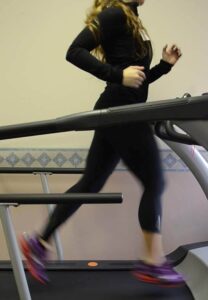What is Therapeutic Exercise ?
Therapeutic exercise is prescribed by a health professional to accomplish a specific goal or set of goals.
For example, your PT might prescribe a specific set of exercises to give you pain relief, better postural control, or movement control, or for neuromuscular re-education after injury or disuse.
Therapeutic exercise is specific to an individual, and designed to address particular problems, such as regaining elbow function after Tommy John surgery, or overcoming low back pain.
You will not find therapeutic exercises on YouTube or in a Xeroxed handout, because these exercises have not been specifically tailored to your individual case, and are therefore of limited therapeutic value.
Therapeutic exercise will typically involve certain carefully-controlled motions and stresses, and will always have a recommended dosage, classified by a number of repetitions per set, number of sets per day, and number of days per week, and usually will come with a set of instructions in case things don't go as planned.
There may be a varying schedule to allow for optimal neural and physiological adaptation.
Evidence shows that targeted therapeutic exercise, as opposed to general exercise like walking, can have profound, specific effects on the body. For example, Tsao and colleagues (see below) showed that two weeks of therapeutic exercise could normalize the brain representation of a specific core stabilizing muscle, but a two week walking program did not make that change.
Therapeutic exercises can be prescribed by your friendly neighborhood physical therapist, who will design a comprehensive program to most effectively address your particular situation and your particular needs. Relying on a customized therapeutic exercise prescription from a trained healthcare professional will speed your improvement, help avoid setbacks, and provide optimal results.
*Tsao, H., et. al. (2010). “Driving plasticity in the motor cortex in recurrent low back pain.“ Eur J Pain 14(8): 832-839.


